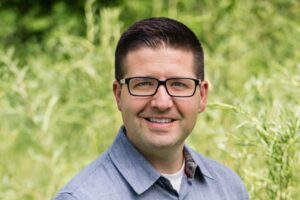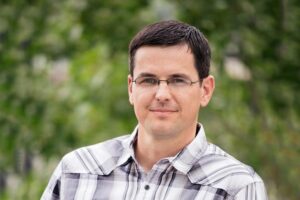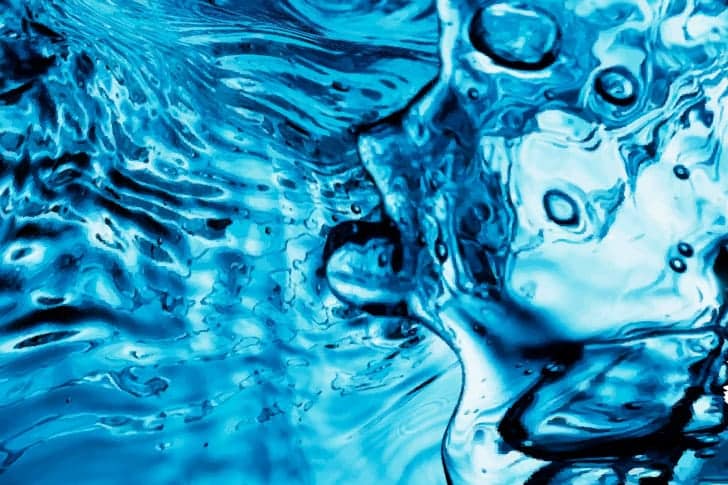Some of the biggest benefits may come from the smallest of technologies.
There is a certain technology that’s smaller than bacteria, but bigger than a water molecule. It can have higher payloads than specific compounds, and it has the ability to recognize its target. What is the technology?
It’s nanotechnology, and you can bet that it will make waves in the seed treatment space, as AquaYield looks to soft launch NanoShield later this year.
Founded in 2014 and based in Utah, AquaYield has primarily been focused on fertilizer technologies to deliver nutrients directly to plant cells. But for the past year and a half, CEO and co-founder Clark Bell and his team have been intensely focused at moving this same technology to the seed treatment space.

“We’ve been dabbling in seed coating for the past three years but working really hard at it for the past 18 months when we realized the potential crossover,” Bell says. “Recently, we’ve been testing it on all different seed types all over the United States, from turfgrass to lettuce.”
The results, he says, have been impressive. Bell and his team look to do a soft launch in the Southern United States later this year.
As an example, Chris Hendrickson, a biology professor at National University and consulting scientist for AquaYield, says that by using NanoShield, one Florida sod grower turned another full crop.
“These are naturally occurring compounds that stimulate germination of the seed, anywhere from 50 percent to 300 percent faster than the norm, depending on crop species and cultivar,” Hendrickson says.
Another example Hendrickson points to is Kentucky bluegrass, which normally takes anywhere from two to four weeks to germinate. He says they are seeing an improved germination rate in five to seven days.
“If I’m a golf course manager, this means I can get my turf up much faster,” Hendrickson says, noting a number of applications this technology can benefit. These include hydroseeding, erosion control and anything requiring high inputs (nutrition, PGRs and pesticides).
Bell says, “when it comes to delivering nutrition to the seed, this technology is on the cutting edge, especially when we consider what’s happening in the areas of seed coating and the microbiome.”
What is Nanotechnology?
Nanoscience and nanotechnology involve the ability to see and to control individual atoms and molecules, according to nano.gov, the official website of the U.S. National Nanotechnology Initiative.
To help put this in perspective, Landon Bunderson, AquaYield chief science officer says that nanoparticles are about 1,000 times smaller than a plant cell.
“You can imagine something of that size is much better at getting into the plant cell — that is what it is designed to do,” Bunderson says. “The hallmark of a nanoparticle is that it is designed to do something.
“In the case of NanoShield, it is designed to recognize its target and to carry an increased payload with a time-release mechanism. It’s kind of like smuggling nutrients into the plant,” Bunderson says.
NanoShield is a nano-sized protectant that goes around nutrient ions, making it unavailable to the soil; now it’s only available to the seed, he explains. This nano-coat delivers nutrients more efficiently to the seed and stays on the seed.
Bell says they are able to use traditional seed coating tools, and the liquid constituents they add contain the nanoparticles.
“It is a component of the coating,” he shares. “It’s a coating that contains specialized particles that helps realize better results.”
The basis of NanoShield is NanoGro, a “kitchen sink fertilizer product” they had developed for growers. Bell, who says he’s never been happy with the status quo, says the end game for AquaYield is to provide farmers with optimized products that drive better yields, less waste and that are more environmentally friendly.
To some, this might seem like an awfully fast launch. How many trials were done? In what locations? Can it be replicated? Are these experimental conditions or growing conditions? Naturally, these questions come to mind.

Bunderson says that high throughput experimentation has allowed them to advance this technology much faster than traditional methods. “I like to think we are dabbling in a big data approach, which gives us more statistical power,” he says.
Still Learning
When asked what the limitations are, Bell says: “This is a new tool and another tool in the toolbox. It has its strengths and weaknesses, of which we continue to explore. There will likely be some chemistries it doesn’t do well with.”
As an example, with the fertilizer version, he says the nanoparticles aren’t able to deliver enough nitrogen to the plant, but that is something that’s easy to get into the plant.
“Things that are extremely difficult to get into the plant can be delivered with high efficiency using nanotechnology, giving some amazing results,” Bell says.
Through research agreements, NanoShield is being tested by some seed companies, but those companies, per agreement, can’t be disclosed at this time.
While Bell and his team are excited about the potential for NanoShield as it comes into the market, he says the future is even brighter as they continue to explore new applications for the use of nanotechnology, seed coatings and plant growth.
“It’s not unlike what is being done with biostimulants, biologicals and microbials,” Bunderson says. “It’s really exciting — when you think about a crop out there in the field, farmers are looking to deliver nutrition, biostimulants and fungicides.”
For example, micronutrients are really good to work with. You have a particle that’s not mobile in the plant. You can track it from the root to the shoot, so you know the proper time windows for release. We could be looking at windows of seven days, 21 days and 42 days. The ratios of plant hormones are expressed differently at different stages.
With the time-release capabilities, we are looking into a number of possibilities: hormones with micronutrients released in a cascade of phases? Who knows, maybe someday we will be able to say 60-day corn instead of 90-day corn, Bell says. It’s possible we could create shorter crop cycles. This can enable physiological and developmental-state-specific schedules of nutrient and other agrochemical applications for each crop in a unique production environment.
There are many facets to this. One big factor is disease control and providing early protection to the seedling. Then there’s a gap between what the seed coat covers and what your fungicide spray will cover.
We want to extend that period of coverage to protect plants from disease and minimize or maybe even close the gap.
“Control is everything,” Bunderson says. Control of when things receive nutrition. Fungicide is just one example of some of the things we are looking into. Farmers can spray later and for some crops, it may even eliminate a pass through the field.
“I fundamentally believe that with what’s out there in biotechnology and the science space, we have the tools to get farmers back to profitability,” Bell says. “Given the investment in this area, it could be a matter of months, year and decade, and that’s why I’m really excited about what’s coming down the pike.”












